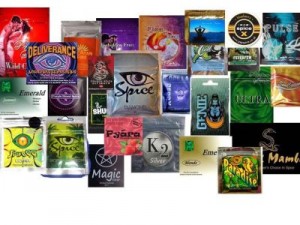
On June 7, the Metropolitan Police Department and federal agents announced the seizure of 80 pounds of heroin in Southeast D.C. The drug bust led to the arrest of 10 people according to a police statement.
The police said the drugs cost about $4 million on the street. All 10 suspects will be charged federally, WJLA reported.
Heroin, however, is not D.C.’s primary illicit drug problem as it was in 2012 along with crack cocaine and marijuana, according to the National Institute on Drug Abuse.
Instead, Police Chief Cathy Lanier told the U.S. Senate Judiciary committee during a “Deadly Synthetic Drugs” hearing June 7, new psychoactive substances (NPS), more commonly known as synthetic drugs, are most prominent in District’s illegal drug trade. She said synthetic drugs have a broader, more dangerous impact than the use of other drugs.
“Because some of the NPS drugs have been selling at very low prices, they have become a drug of choice for many of the poorest individuals with substance abuse in the District, such as the homeless,” said Lanier in her testimony for a U.S. Senate Judiciary hearing on deadly synthetic drugs June 7. “In 2015, the District of Columbia’s Department of Fire and Emergency Medical Services (FEMS) responded to more than 3,800 calls for service and provided at least 3,500 transports related to suspected synthetic cannabinoid use.” In September the Department reported a high of 20 NPS related synthetic drug emergencies a day.
According to the Addiction Center, between 2012 and 2013, there were approximately 20 hospitalizations from synthetic marijuana overdoses per month. According to Lanier, the police department and their federal partners have seized more than 450 kilograms of synthetic drugs since 2013.
“Unfortunately, the demand still exists, and the dealers have moved more to street operations. Combating street dealing remains challenging, and makes the District’s other efforts all the more important,” Lanier said. To fight against the selling and distribution of synthetic drugs D.C. has instituted a regulatory ban that prohibits businesses from selling synthetic narcotics by threatening to close and fine any business caught selling the substances.
“The number of emergency transports rose from just over 100 in April 2015 to a high around 600 per month last August, September, and October,” Lanier said, emphasizing that transports decreased from November through February to less than five per day, but are continuing to rise since then. “Unfortunately, it is likely that criminal enterprises have only just begun to explore the possibilities of manufacturing and distributing new psychoactive substances.”


